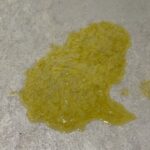Water pooling inside your refrigerator can be alarming. Fortunately, internal fridge leaks are usually less serious than external ones and often stem from simple issues like condensation or minor blockages. This guide explores common causes of water leaking inside your fridge and provides solutions to help you fix the problem.
Common Causes of a Leaky Fridge Interior
Several factors can contribute to water accumulating inside your refrigerator. Here are three of the most frequent culprits:
1. Clogged or Frozen Defrost Drain
The defrost drain carries away water produced during the defrost cycle. If this drain becomes clogged with food particles or ice, water can back up and leak into your fridge.
Because the defrost drain is typically located behind the refrigerator’s back panel, it’s best to contact a qualified appliance repair technician to inspect and clear any blockages.
2. Damaged or Misaligned Water Supply Line
A damaged or improperly connected water supply line – the tube that delivers water to your ice maker and water dispenser – can leak water behind the fridge, eventually seeping into the interior.
Carefully trace the water supply line from the wall connection to your refrigerator, checking for kinks, cracks, or loose connections. If you find damage, contacting a refrigerator repair service for replacement is recommended.
3. Excessive Humidity
High humidity levels can contribute to condensation inside your refrigerator. Every time you open the door, humid air enters, and the moisture condenses on cold surfaces, forming water droplets. While not technically a leak, this can create puddles.
Using a dehumidifier in your kitchen or placing desiccant packets inside the refrigerator can help absorb excess moisture and minimize condensation.
Preventative Maintenance Tips
Proactive maintenance can help prevent future fridge leaks. Consider these tips:
1. Regular Cleaning
Regularly cleaning your refrigerator helps prevent food debris from clogging the defrost drain. Keeping shelves organized also promotes proper airflow and reduces moisture buildup.
2. Professional Inspections
Scheduling periodic inspections by a qualified technician can identify potential problems with your water supply line, defrost drain, and door seals before they lead to leaks.
3. Optimal Temperature Settings
Maintaining the correct fridge temperature is crucial. A setting that’s too warm allows food to spoil and release moisture, while a setting that’s too cold can lead to excessive ice formation that melts and drips when the door is opened. Consult your refrigerator’s manual for the recommended temperature range.
Seeking Professional Help
If you’ve tried troubleshooting but can’t pinpoint the cause of your leaky fridge, or if the problem persists, it’s time to seek professional assistance. A qualified appliance repair technician can diagnose the issue accurately and provide the necessary repairs.
